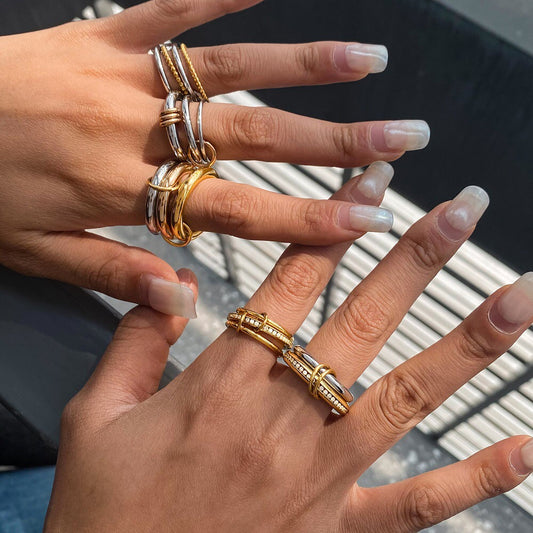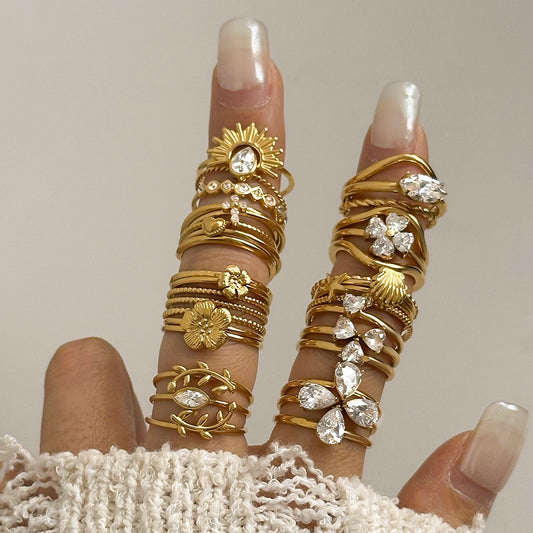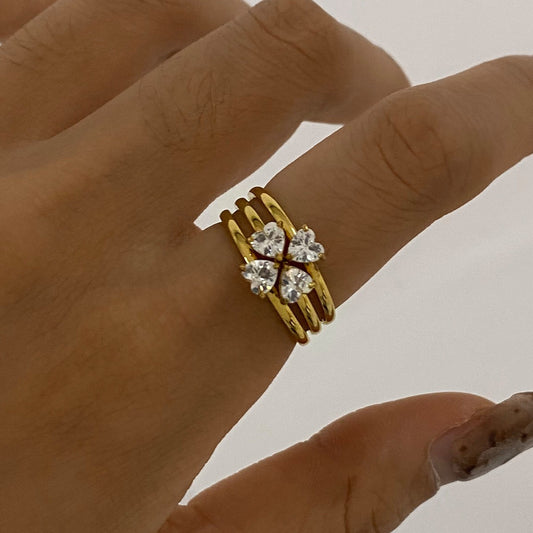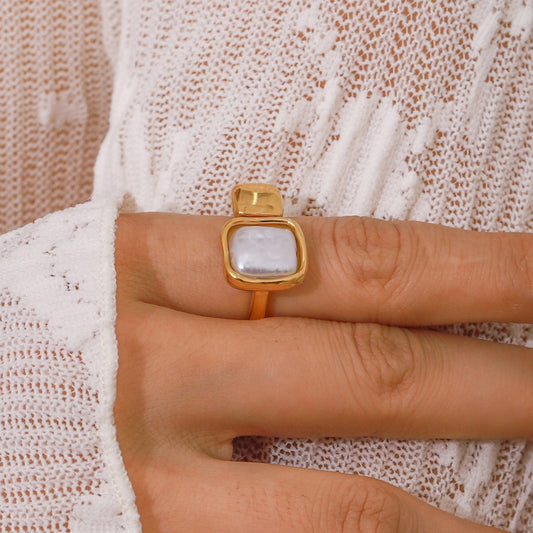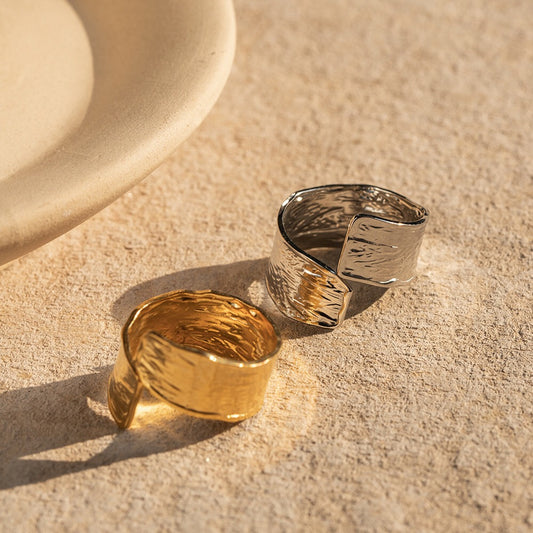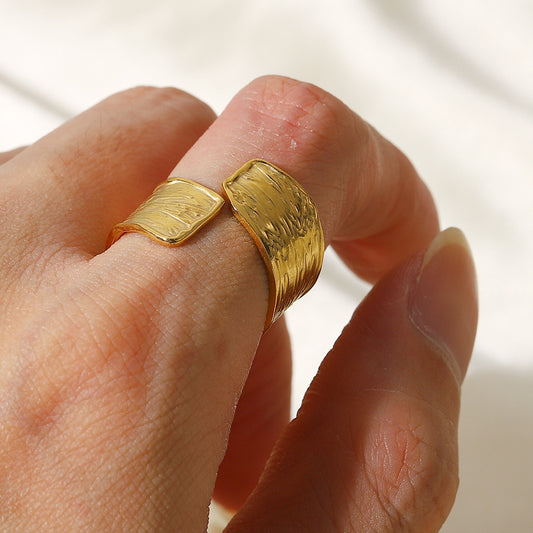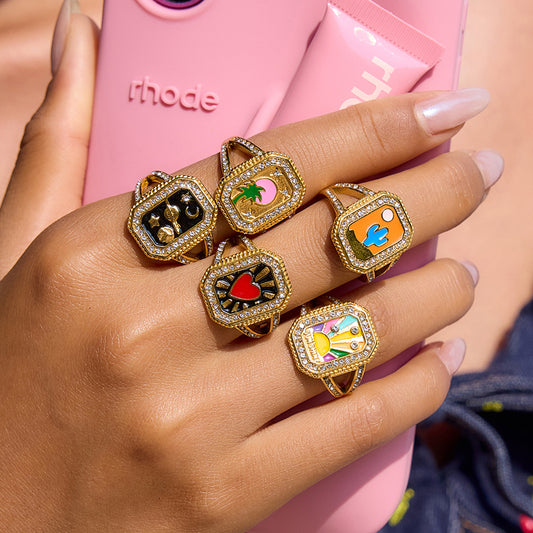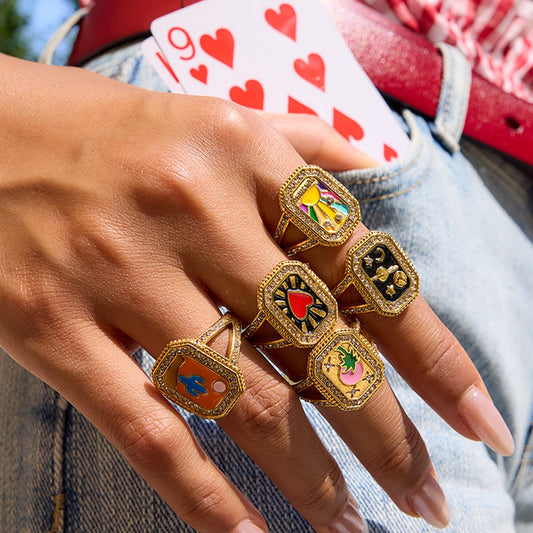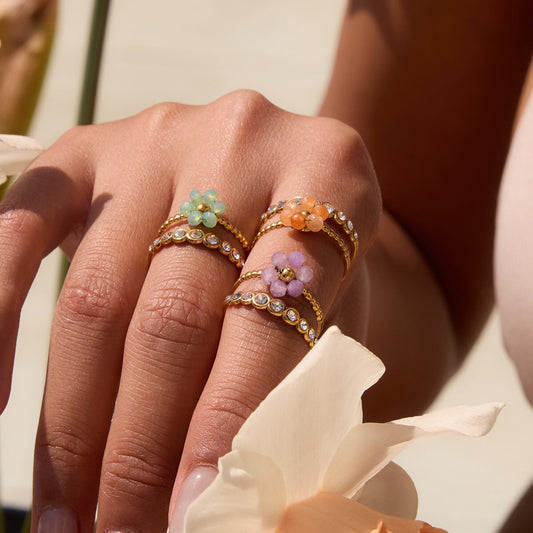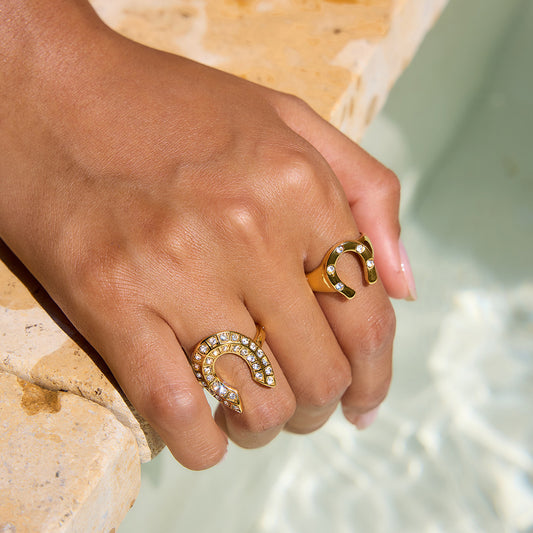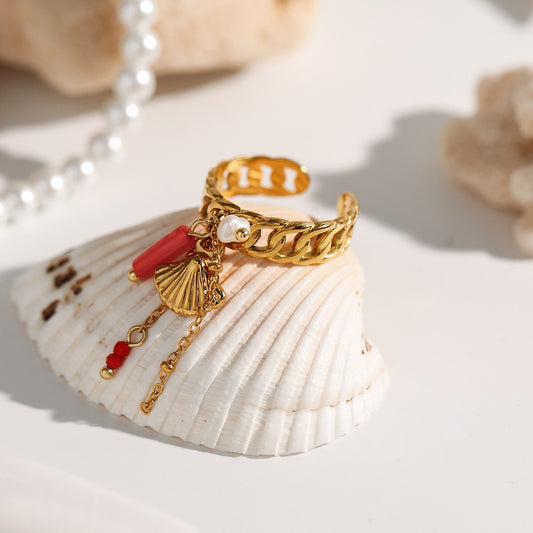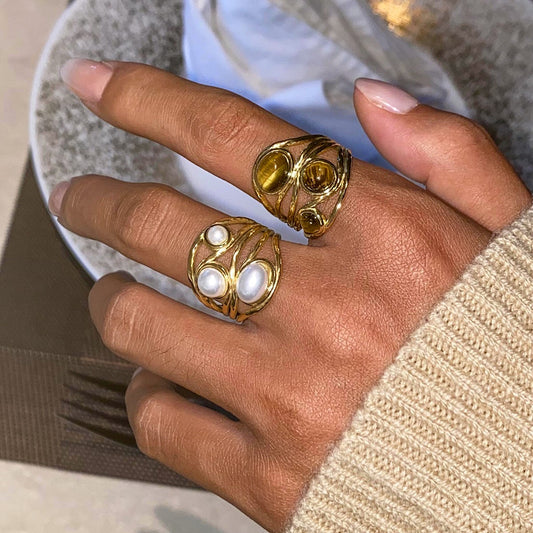A tanzanite ring isn’t just jewelry—it’s a piece of the earth’s history. With its mesmerizing violet-blue hue (often called "blue velvet with a purple kiss") and exclusive origin (found only in Tanzania’s Merelani Hills), tanzanite has captivated gemstone lovers since its discovery in 1967. Global tanzanite jewelry demand may reach $700 million in 2025, driven by increased interest in rare blue-violet gemstones. Unlike common gemstones, tanzanite’s scarcity (geologists predict its mines may deplete within 30 years) makes it a "future heirloom"—a ring that won’t just adorn your finger, but tell a story of rarity and intention. Whether you’re drawn to its otherworldly color, its spiritual symbolism, or its status as a collector’s gem, a tanzanite ring is a statement of taste and reverence for the extraordinary.
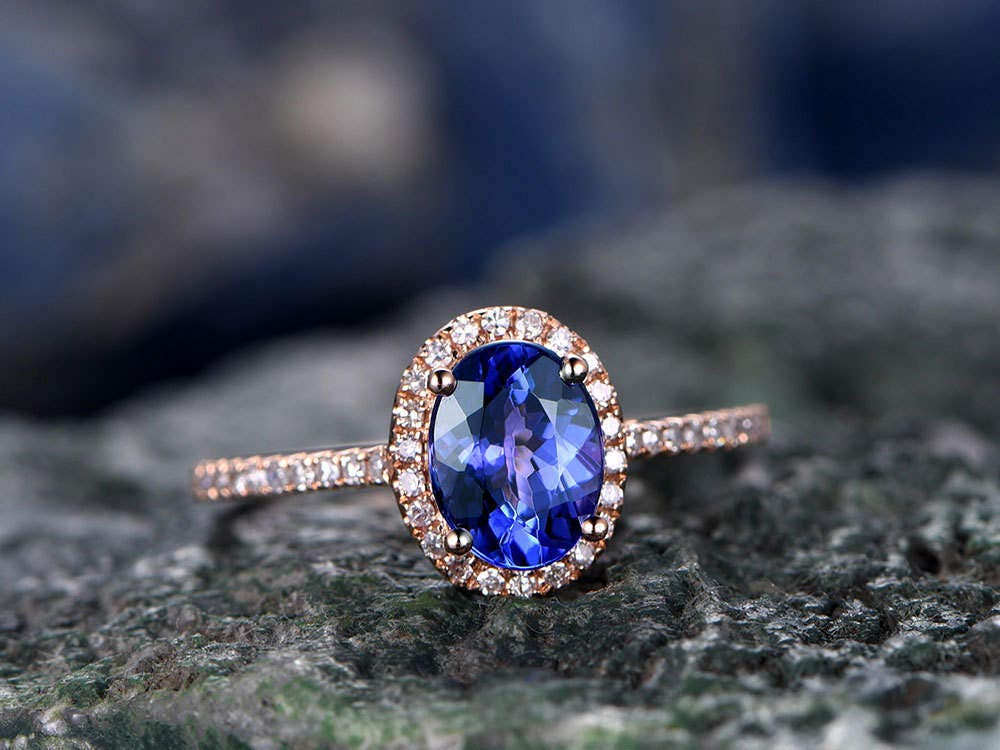
What Are Tanzanite Rings?
Tanzanite rings feature tanzanite—a calcium aluminum silicate mineral with a signature trichroic property: it shifts from deep blue to rich violet to soft burgundy depending on the light. This color play, paired with its exclusive Tanzanian origin, makes tanzanite one of the most sought-after colored gemstones in the world. To understand its allure, let’s break down its key traits and why it stands out from other blue/purple gemstones.
Core Traits of Tanzanite Rings
Tanzanite rings owe their prestige to four unparalleled qualities:
-
Rarity: Tanzanite is found in only one place on Earth—the Merelani Hills, a 7-square-mile region in northern Tanzania. No other mine in the world has produced commercial quantities of tanzanite, and with deposits dwindling, its value is expected to rise steadily.
-
Color Magic: Unlike sapphires (which are single-hued) or amethysts (which lack depth), tanzanite exhibits trichroism—three distinct colors in different lighting. In natural daylight, it glows deep blue; under warm indoor light, it shifts to velvety violet; in dim light, it hints at burgundy. This "color dance" makes every tanzanite ring feel unique.
-
Symbolism: Tanzanite is often linked to spiritual awareness, transformation, and intuition. Many wear it as a reminder to embrace change or trust their instincts—adding emotional weight to its physical beauty.
-
Size Potential: Tanzanite crystals often grow larger than sapphires or rubies, meaning you can find substantial tanzanite stones (2–5 carats) at a more accessible price than comparable diamonds or blue sapphires.
How Tanzanite Rings Differ from Other Blue/Purple Gemstone Rings
Tanzanite’s uniqueness sets it apart from more common alternatives:
-
vs. Blue Sapphire: Blue sapphires are harder (9 on the Mohs scale vs. tanzanite’s 6–7) but lack tanzanite’s color range—sapphires stay blue, while tanzanite shifts hues. Tanzanite is also rarer and often more affordable for larger stones.
-
vs. Amethyst: Amethysts are purple but lack tanzanite’s blue undertones and depth. They’re also far more common (found worldwide), making tanzanite a more exclusive choice.
-
vs. Iolite: Iolite (sometimes called "water sapphire") has a similar blue-violet hue but lacks tanzanite’s intensity and trichroic vividness. Tanzanite’s color is richer, and its origin story adds prestige.

Why Choose a Tanzanite Ring?
Tanzanite rings have won over collectors and casual wearers alike for three unshakable reasons: their rarity, their transformative color, and their ability to elevate any moment.
Rarity = Future Heirloom Status
Tanzanite’s exclusivity isn’t just a selling point—it’s a promise of lasting value. Unlike mass-produced gemstones, tanzanite’s limited supply means a tanzanite ring you buy today will likely appreciate in value over time. It’s not just a piece of jewelry; it’s an investment you can pass down to future generations, with a story to tell: "This gem came from the only place on Earth where tanzanite is found." A 2024 survey of gemstone collectors found that 89% of tanzanite owners believe their pieces will become "family heirlooms," compared to 62% of sapphire owners.
Color That Adapts to Every Moment
Tanzanite’s trichroism makes it one of the most versatile gemstones for rings. It transitions seamlessly from day to night, casual to formal:
-
Daylight: Deep blue tanzanite pairs beautifully with jeans and a white shirt, adding a pop of color without feeling overdone.
-
Office Light: Violet-hued tanzanite complements neutral blazers and midi skirts, balancing professionalism with personality.
-
Evening: Burgundy-tinged tanzanite glows under candlelight or party lights, making it perfect for dinners, weddings, or galas.
This adaptability means you’ll wear a tanzanite ring far more than a single-hued gemstone—no need to switch rings for different occasions.
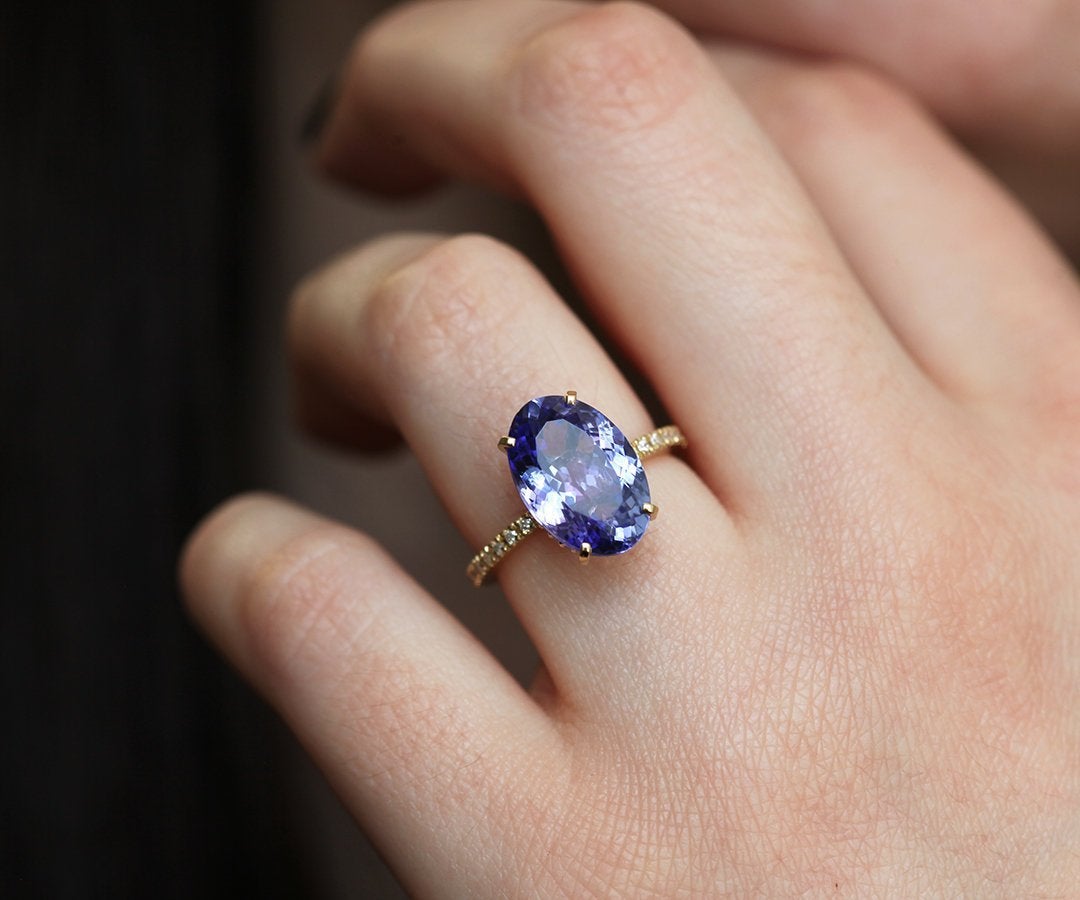
A Bold Alternative to Traditional Gemstones
For those who want to step outside the diamond/sapphire box, tanzanite offers a fresh, luxurious choice:
-
Engagements: A tanzanite engagement ring says "we’re not afraid to be different"—it’s a symbol of a unique love story, not just a traditional one.
-
Anniversaries: Tanzanite is the birthstone for December and the 24th wedding anniversary gem, making it a meaningful choice for milestone celebrations.
-
Self-Love: A tanzanite ring is a gift to yourself that says "I deserve something rare and beautiful"—a reminder of your own uniqueness.
Popular Styles of Tanzanite Rings
Tanzanite’s vivid color shines in every design, from minimalist to dramatic. Here are the most beloved styles to suit every taste:
1. Tanzanite Solitaire Ring (Minimalist Luxury)
The most timeless style—letting tanzanite’s color take center stage:
-
Design: A single tanzanite stone (round, oval, or cushion-cut) set in a thin metal band (platinum, white gold, or rose gold). The setting is often pronged (4 or 6 prongs) to maximize light exposure, enhancing the gem’s color play. Stone sizes: 1–3 carats (subtle enough for daily wear, large enough to showcase color).
-
Best For: Minimalists, gemstone purists, or anyone who wants tanzanite’s beauty to be the focal point. White gold or platinum settings complement tanzanite’s blue tones, while rose gold adds warmth to its violet hues.
-
Why It’s Loved: It’s the "less is more" approach to luxury—no extra details to distract from the gem’s magic. A tanzanite solitaire ring works for every occasion, from coffee runs to board meetings.

2. Tanzanite and Diamond Accent Ring (Subtle Sparkle)
For those who want a little extra shine without overpowering tanzanite:
-
Design: A central tanzanite stone flanked by small diamonds (pavé or channel-set) on the band or around the gem. The diamonds add sparkle while letting tanzanite’s color remain the star. Popular combinations: oval tanzanite with round diamonds, or cushion-cut tanzanite with baguette diamonds.
-
Best For: Lovers of subtle glamour, engagement rings, or anniversary gifts. The diamonds enhance tanzanite’s blue-violet hue, creating a "celestial" effect (like a blue star surrounded by tiny lights).
-
Why It’s Loved: It balances rarity (tanzanite) with tradition (diamonds), making it a great choice for those who want to honor both uniqueness and classic taste.

3. Tanzanite Statement Ring (Bold Drama)
For when you want to make a memorable impression:
-
Design: A large tanzanite stone (3+ carats) in an ornate setting—think halo designs (tanzanite surrounded by smaller tanzanites or diamonds), three-stone styles (tanzanite with sapphires or rubies), or nature-inspired motifs (tanzanite set in a "leaf" or "vine" band).
-
Best For: Special events (weddings, galas), cocktail parties, or anyone who loves to stand out. A bold tanzanite statement ring is a conversation starter—everyone will ask, "Is that tanzanite?"
-
Why It’s Loved: It’s unapologetically luxurious. The large tanzanite stone showcases its color play to full effect, and the ornate setting adds drama without overshadowing the gem.
4. Tanzanite Birthstone Ring (Personalized Meaning)
A thoughtful way to celebrate December birthdays or honor loved ones:
-
Design: A small to medium tanzanite stone (0.5–2 carats) set in a band with other birthstones (e.g., tanzanite for December + ruby for July for a sibling pair) or engraved details (name, birthday date). The band is often simple (14k gold or silver) to keep focus on the gem.
-
Best For: Birthday gifts, Mother’s Day (with kids’ birthstones), or self-gifting. It’s a meaningful way to carry a piece of your identity (or a loved one’s) with you.
-
Why It’s Loved: It’s personal and rare. Unlike common birthstones (e.g., amethyst), tanzanite feels special—like a secret you wear on your finger.
5. Tanzanite Stackable Bands (Versatile Layering)
For those who love to mix and match:
-
Design: Thin bands (1–2mm wide) with small tanzanite chips or a single tiny tanzanite stone (3–5mm). They’re designed to be stacked with other bands (silver, gold, or diamond) for a customized look.
-
Best For: Minimalists who love layering, casual wear, or anyone who wants to add a touch of tanzanite to their everyday stack.
-
Why It’s Loved: They’re flexible—wear one alone for subtle color, or stack three with gold bands for a bolder look. The tiny tanzanite stones still show off their color play, even in small sizes.
How to Choose the Perfect Tanzanite Ring
Selecting a tanzanite ring requires focusing on quality (color, clarity, cut) and aligning it with your style and budget. Follow these steps to find your ideal piece:
Step 1: Prioritize Color (The Most Important Factor)
Tanzanite’s value is determined first by its color. Look for:
-
Saturation: Deep, intense color (not pale or washed out). The best tanzanite has a rich blue-violet hue that’s visible even in low light.
-
Hue Balance: A mix of blue and violet (not too much blue, not too much purple). Most collectors prefer a 60/40 blue-violet split, but personal taste matters—if you love purple, lean toward more violet; if you love blue, choose more blue.
-
Trichroism: Ensure the gem shifts color in different lighting (hold it near a window, then under a warm lamp). A tanzanite that stays one color may be heat-treated excessively or not genuine.
Step 2: Evaluate Clarity (But Don’t Fear Inclusions)
Tanzanite often has small inclusions (internal flaws)—this is normal and doesn’t diminish its beauty. Look for:
-
Eye-Clean Clarity: Inclusions should not be visible to the naked eye. Use a magnifying glass (10x) to check—minor inclusions are acceptable, but large cracks or dark spots can weaken the gem.
-
Avoid Heat Damage: Most tanzanite is heat-treated to enhance color (a standard practice), but over-treated stones may have a "glassy" appearance or visible fractures. Ask the jeweler for details on treatment.
Step 3: Choose the Right Cut
A well-cut tanzanite maximizes its color and light reflection. The best cuts for tanzanite are:
-
Oval or Cushion-Cut: These cuts enhance tanzanite’s color play and make the stone look larger than its carat weight.
-
Emerald-Cut: Highlights tanzanite’s clarity and creates a "hall of mirrors" effect that showcases its blue-violet hue.
-
Round-Cut: Classic and versatile, but may not show off tanzanite’s trichroism as well as oval or cushion cuts.
Avoid poorly cut tanzanite (too shallow or too deep)—it will look dull and fail to showcase the gem’s unique color.
Step 4: Pick a Metal That Complements Tanzanite
The metal setting should enhance tanzanite’s hue:
-
White Gold/Platinum: Cool metals make tanzanite’s blue tones pop—perfect for those who love a crisp, modern look.
-
Rose Gold: Adds warmth to tanzanite’s violet hues—ideal for romantic, feminine styles.
-
Yellow Gold: Complements tanzanite’s burgundy undertones—great for vintage-inspired or bold designs.
Step 5: Set a Realistic Budget
Tanzanite rings range in price from \(300 (small, low-saturation tanzanite in silver) to \)10,000+ (large, high-quality tanzanite in platinum with diamonds). Here’s how to allocate:
-
Budget Under $1,000: 0.5–1 carat tanzanite (medium saturation) in 10k gold or silver.
-
Budget \(1,000–\)3,000: 1–2 carat tanzanite (high saturation, eye-clean) in 14k gold.
-
Budget Over $3,000: 2+ carat tanzanite (premium color, no visible inclusions) in 18k gold or platinum, with diamond accents.
How to Care for a Tanzanite Ring (Protect Its Rarity)
Tanzanite is softer than diamonds or sapphires (6–7 on the Mohs scale), so proper care is essential to keep it looking its best:
Daily Care Tips
-
Remove Before Activities: Take off the ring before swimming (chlorine can dull color), showering (soap builds up), working out (sweat can damage the setting), or doing chores (cleaning products scratch the gem).
-
Avoid Impact: Tanzanite can chip if dropped or hit against hard surfaces (e.g., countertops, doorknobs). Be gentle when wearing or storing.
-
Wipe After Wear: Gently wipe the tanzanite with a soft, dry microfiber cloth to remove oil or lotion—this keeps its color bright.
Weekly Deep Cleaning
-
Mix warm water with a drop of mild dish soap (avoid antibacterial or citrus-scented soaps—they’re too harsh) in a small bowl.
-
Soak the ring for 5–10 minutes (don’t soak longer—tanzanite is porous and can absorb water).
-
Gently scrub the tanzanite and setting with a soft-bristled toothbrush (use light pressure—hard scrubbing can scratch the gem).
-
Rinse under warm running water and pat dry immediately with a microfiber cloth.
-
Avoid ultrasonic cleaners—they can damage tanzanite’s inclusions or loosen the setting.
Storage Tips
-
Store Separately: Keep the tanzanite ring in a soft jewelry pouch or padded compartment to avoid scratching from harder gemstones (e.g., diamonds, sapphires).
-
Avoid Extreme Temperatures: Don’t store tanzanite near heat sources (e.g., radiators, hair dryers) or in direct sunlight—extreme heat can fade its color.
-
Check the Setting: Inspect the prongs or bezel holding the tanzanite every 3–6 months—loose settings can cause the gem to fall out. Have a jeweler repair loose settings immediately.
Frequently Asked Questions About Tanzanite Rings
Q1: Is tanzanite a good choice for an engagement ring?
A: Yes—if you’re willing to take extra care! Tanzanite is softer than diamonds, so it’s best for those who don’t work with their hands (e.g., office jobs) or who are willing to remove the ring during high-impact activities. Its rarity and unique color make it a meaningful engagement gem for couples who want something non-traditional.
Q2: How can I tell if a tanzanite ring is genuine?
A: Genuine tanzanite has three key traits:
-
Trichroism: It shifts color in different lighting (blue in daylight, violet indoors).
-
Hardness: It scratches glass but can be scratched by a steel nail (diamonds won’t scratch).
-
Origin Certificate: Reputable jewelers will provide a certificate proving the tanzanite is from Tanzania (ask for a GIA or AGL certificate).
Q3: Will tanzanite fade over time?
A: No—genuine tanzanite is stable and won’t fade with normal wear. However, prolonged exposure to extreme heat (e.g., fire) or harsh chemicals (e.g., bleach, ammonia, or strong jewelry cleaners) can damage its color or cause discoloration. This is why it’s critical to remove your tanzanite ring before using cleaning products or exposing it to high temperatures (like wearing it while cooking over an open flame). With proper care, your tanzanite’s vibrant blue-violet hue will remain intact for decades.
Q4: Can tanzanite rings be resized?
A: Yes—but with caution. Tanzanite rings can be resized by a skilled jeweler, but the process requires extra care to avoid damaging the gem or the setting. Here’s what to know:
-
Simple Bands: Plain rose gold, white gold, or silver bands with a small tanzanite stone are easiest to resize (jewelers can cut and solder the metal without risking the gem).
-
Complex Settings: Rings with intricate designs (e.g., halo settings, pavé diamonds, or three-stone styles) are harder to resize—adjusting the band may loosen small accent stones or distort the setting.
-
Avoid Over-Resizing: Most jewelers recommend resizing tanzanite rings by no more than 1–2 sizes. Resizing by more than that can weaken the band or put pressure on the tanzanite, increasing the risk of chipping.
Always choose a jeweler with experience working with colored gemstones—they’ll have the tools and expertise to resize your ring safely.
Q5: Is tanzanite ethical?
A: Ethical practices vary by mine, but the tanzanite industry has made strides in recent years to improve transparency. Here’s how to ensure your tanzanite ring is ethically sourced:
-
Look for Certifications: Ask for a "fair trade" or "ethical sourcing" certificate from the jeweler. Organizations like the Responsible Jewellery Council (RJC) certify brands that adhere to ethical mining and labor standards.
-
Choose Reputable Brands: Opt for jewelers who partner directly with mines in Tanzania’s Merelani Hills or work with trusted suppliers. Many ethical brands share their sourcing stories online (e.g., how the tanzanite was mined, how workers were compensated).
-
Avoid "Conflict Tanzanite": While tanzanite isn’t associated with the same level of conflict as diamonds, unethical mines may use child labor or exploit workers. A reputable jeweler will be able to trace your tanzanite’s origin back to the mine.
By prioritizing ethical sourcing, you’ll not only own a beautiful ring but also support practices that protect workers and the environment in Tanzania.
Q6: How does tanzanite hold its value compared to other gemstones?
A: Tanzanite holds its value well—and is expected to appreciate over time—thanks to its rarity. Here’s how it stacks up to other popular gemstones:
-
vs. Diamonds: Diamonds are more widely recognized and have a more established resale market, but high-quality tanzanite (premium color, eye-clean clarity) often appreciates faster because of its limited supply. A 3-carat tanzanite ring bought today may be worth significantly more in 10 years as mines deplete.
-
vs. Blue Sapphires: Blue sapphires are harder and more traditional, but tanzanite is rarer. For larger stones (2+ carats), tanzanite is often more affordable than blue sapphires—and its unique color play makes it a more distinctive choice for collectors.
-
vs. Amethysts: Amethysts are common and affordable, so they hold little resale value. Tanzanite, by contrast, is a rare gemstone with a growing following, making it a better investment for those looking to own a piece that retains (or gains) value.
Keep in mind that value depends on quality: a pale, heavily included tanzanite will hold less value than a deep blue-violet, eye-clean stone. Always keep your tanzanite’s certification (e.g., GIA, AGL) to prove its quality when reselling or passing it down.
Conclusion: Own a Piece of the Extraordinary
A tanzanite ring is more than a accessory—it’s a connection to a single corner of the Earth, a showcase of nature’s color magic, and a future heirloom that will tell your story for generations. Its rarity, versatility, and symbolic weight make it a choice for those who don’t just want jewelry—they want something meaningful.
Whether you’re wearing a tanzanite solitaire to the office, a statement ring to a wedding, or a birthstone band as a daily reminder of your identity, this gemstone’s violet-blue glow will always feel like a little piece of the extraordinary. With proper care and ethical sourcing, your tanzanite ring will be a treasure you’ll cherish for years—and one day, pass on to someone who will love it just as much.
Here’s to rare beauty, unforgettable moments, and the unique story only a tanzanite ring can tell.






